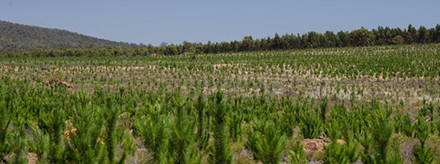The farming versus forestry debate has been bubbling along in New Zealand for some time now. The argument from groups such as the Federated Farmers is, simply put, that too much valuable farming land is being used for trees.
They use numerous arguments including farming jobs in regional areas will be lost, that New Zealand planting will far exceed what the Climate Change Commission projected as a sustainable amount and so on.
The Federated Farmers has called on the government to change the rules of the special forestry test for overseas forest investment, claiming that overseas investors are carbon farming and taking farmland out of production.
This of course has been challenged by the Forest Owners Association on the grounds that any overseas investor using the special forestry test to obtain Overseas Investment Office consent is banned from carbon farming.
The Federated Farmers have even complained that forestry was making it more difficult to attract shearing gangs on to farms.
The Forest Owners Association has of course pointed out quite clearly that farmers converting to production forests were making an investment in the future, both for wood production and for carbon sequestration.
But too often, as is sadly the case, the debate has come down to semantics.
So, what is the case in Australia?
Well, some groups have been quietly, and to date very quietly, championing the same cause.
While it is not a major issue here yet, and the Nationals not being part of Government is seen by some as something of a circuit breaker to the debate, there are mutterings.
A Letter to the Editor of a major southern New South Wales newspaper this week highlighted what the writer saw as the issue of the value of a paddock of pine trees.
The newspaper’s correspondent wrote, in part, that if the “softwood plantation people can convince the NSW state government … to pay $25,000-$30,000 per hectare … to plant pines, not only will it be an economic travesty, a social and community disgust, but also an environmental degradation and devastation”.
He went on to argue that the managers of pine tree paddocks are “very poor stewards of our most valuable resources, and water”.
The argument went on to cover other environmental concerns, the value and productivity of pastoral land given current cattle prices, and so on.
The writer did acknowledge the need to access timber for the Australian market.
This was one letter, one man’s opinion, in an area of NSW heavily reliant on the timber industry.
Given the New Zealand situation, we can expect more.
The debate has not received any great traction in Australia as yet. But give it time and be prepared.






